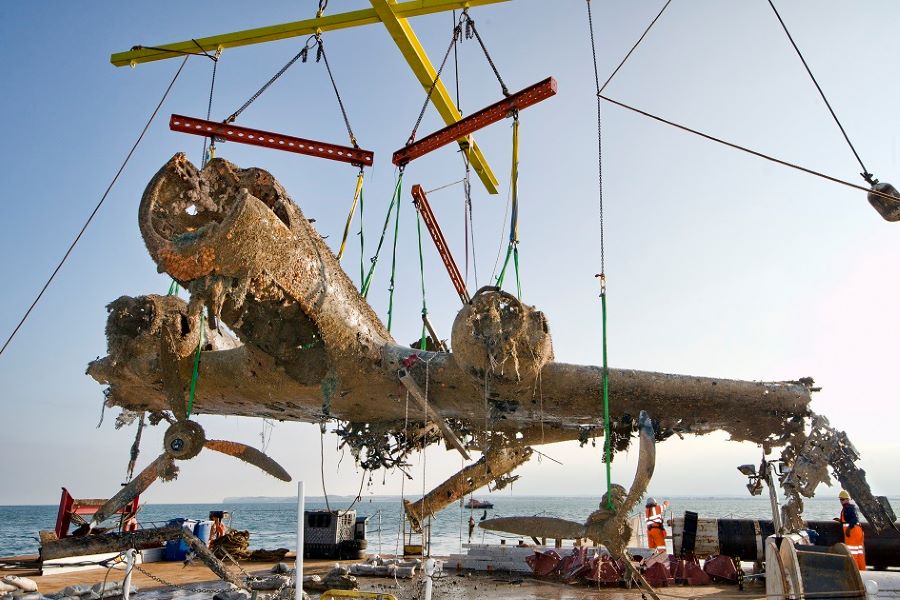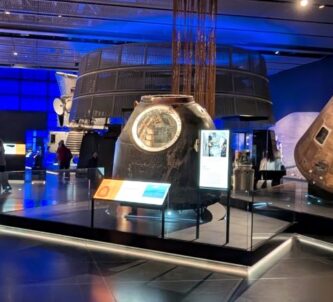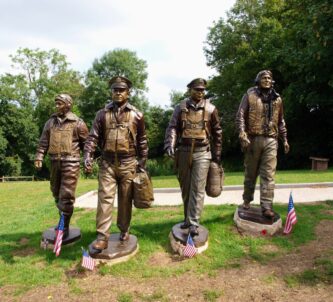Plans are underway at the Royal Air Force Museum Midlands* for the wing section of an iconic Second World War Dornier Do 17 to go on public display in early 2025. Salvaged after more than 70 years submerged beneath the waters of the Goodwin Sands, this unique artefact offers visitors a special glimpse into the past.
Nicknamed the ‘Flying Pencil’ due to its slender fuselage, the Do 17 played a pivotal role in the early stages of the Second World War and is best remembered for its involvement in the Battle of Britain. Of more than 1,500 Do 17 bombers produced, over 400 were deployed by the Luftwaffe during the pivotal battle. Today, only one remains complete.
The wing section set to be displayed comes from this sole surviving Do 17, recovered in a complex and delicate operation led by the RAF Museum in 2013. The dramatic moment the aircraft was lifted from the seabed and surfaced from the waters was broadcast live, capturing global attention. The recovery and subsequent conservation efforts have since fascinated not only aviation enthusiasts and historians but also scientists and engineers, all intrigued by the challenge of preserving this historic airframe for future generations.

Dr Harry Raffal, RAF Museum Head of Collections and Research said: “This is a remarkable moment for aviation history in Britain. After more than tens of years of intensive conservation, treatment and stabilisation, the Do 17 will go on public display. It represents not only the culmination of an extraordinary salvage operation but a unique way of understanding the Battle of Britain. The new year will see the Do 17 wing section, propellers, and engines situated alongside a Boulton-Paul Defiant, the very type that delivered the final blows to this Do 17. Our audience will see first-hand the thin edge of technology which enabled the RAF and Luftwaffe to fight out the most important battle of a generation.”
This particular Do 17 was shot down on 26 August 1940, by Pilot Officer Desmond Hughes and his gunner, Sgt Fred Gash, of 264 Squadron RAF, flying a Boulton Paul Defiant**. It was their first taste of combat and they shot down two Do 17s that day. This one, flown by Luftwaffe pilot Willi Effmert, a married 24-yr-old from a spa town near Hanover, was badly damaged in the attack. Effmert attempted to save his crew by making a controlled crash landing on the Goodwin sands, but on touchdown in the shallow water, the aircraft somersaulted and fell into the sea on its back. Only Effmert and the observer, 21-yr-old Hermann Ritzel from Frankfurt, survived. The bodies of their two crew mates were later washed up on either side of the North Sea.
Visitors will be able to see what remains of the wing section, propellers, and engines. They will learn the aircraft’s role in aerial warfare, and its story, which is always what brings any piece of “wreckology” alive.

They will also learn about the salvage operation and unique preservation techniques employed to safeguard its legacy after 70 years in the sea. After its recovery the Do 17’s fuselage, wing sections, and smaller components, including the propellers and engines, were placed in purpose-built hydration tunnels. The aircraft was carefully sprayed with a low-concentration citric acid solution, which helped remove marine deposits and neutralised corrosive impurities within the aluminium structure. This technique was developed by the RAF Museum alongside scientists at the Imperial College London. After ensuring the solution had effectively stabilised the airframe, the fuselage was removed from the tunnels in September 2014, followed by the wings and engines in January 2015. Since then, the Do 17 has been housed in the Museum’s Conservation Centre, where it remains today.
The Do 17 wing section will be available for public viewing from early 2025, subject to suitable weather conditions for the move.
The Do 17 fuselage will remain in store for the time being, owing to space constraints in the hangars, but the RAF Museum retains the option to display it in future alongside the wing section. Sadly there are no plans to attempt a full restoration.
* I, and I expect others, will always think of it as the ‘RAF Museum- Cosford’.
** The Defiant was a single engine monoplane, rather like a Spitfire or Hurricane, but with a power-operated gun turret behind the cockpit. They proved to be vulnerable to Luftwaffe fighters and their service life was short-lived. This was one of their all-too-rare victories.







